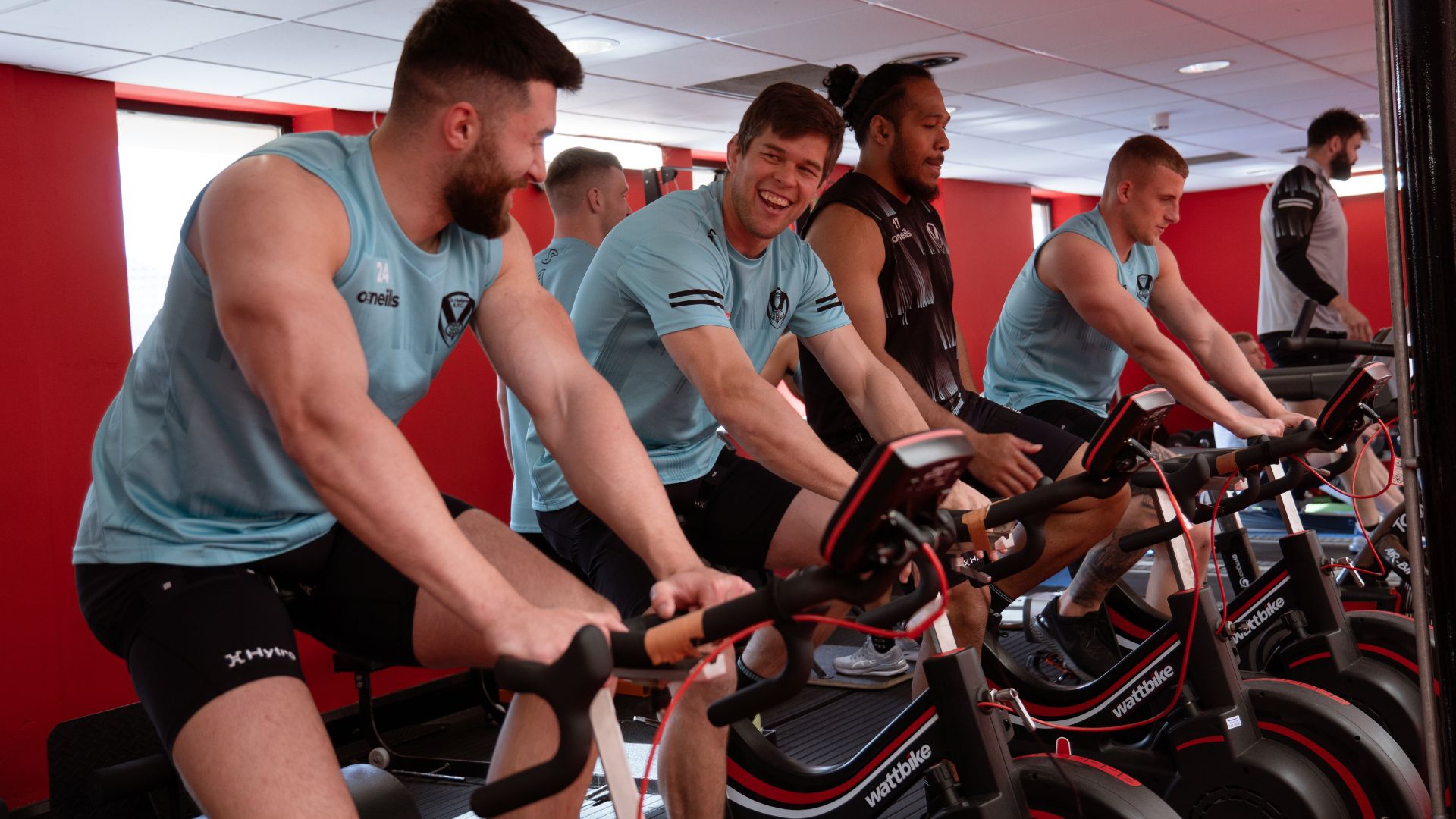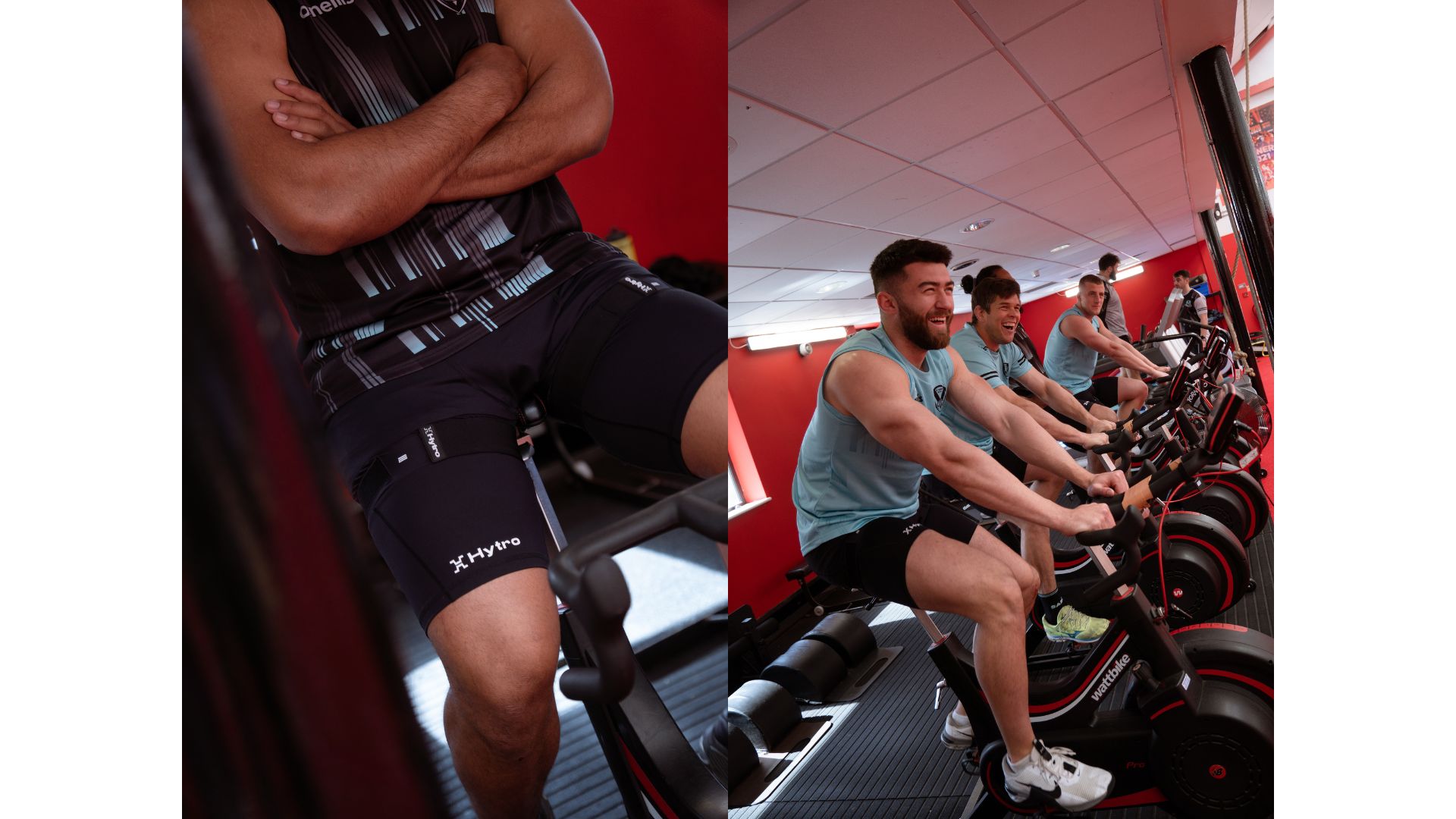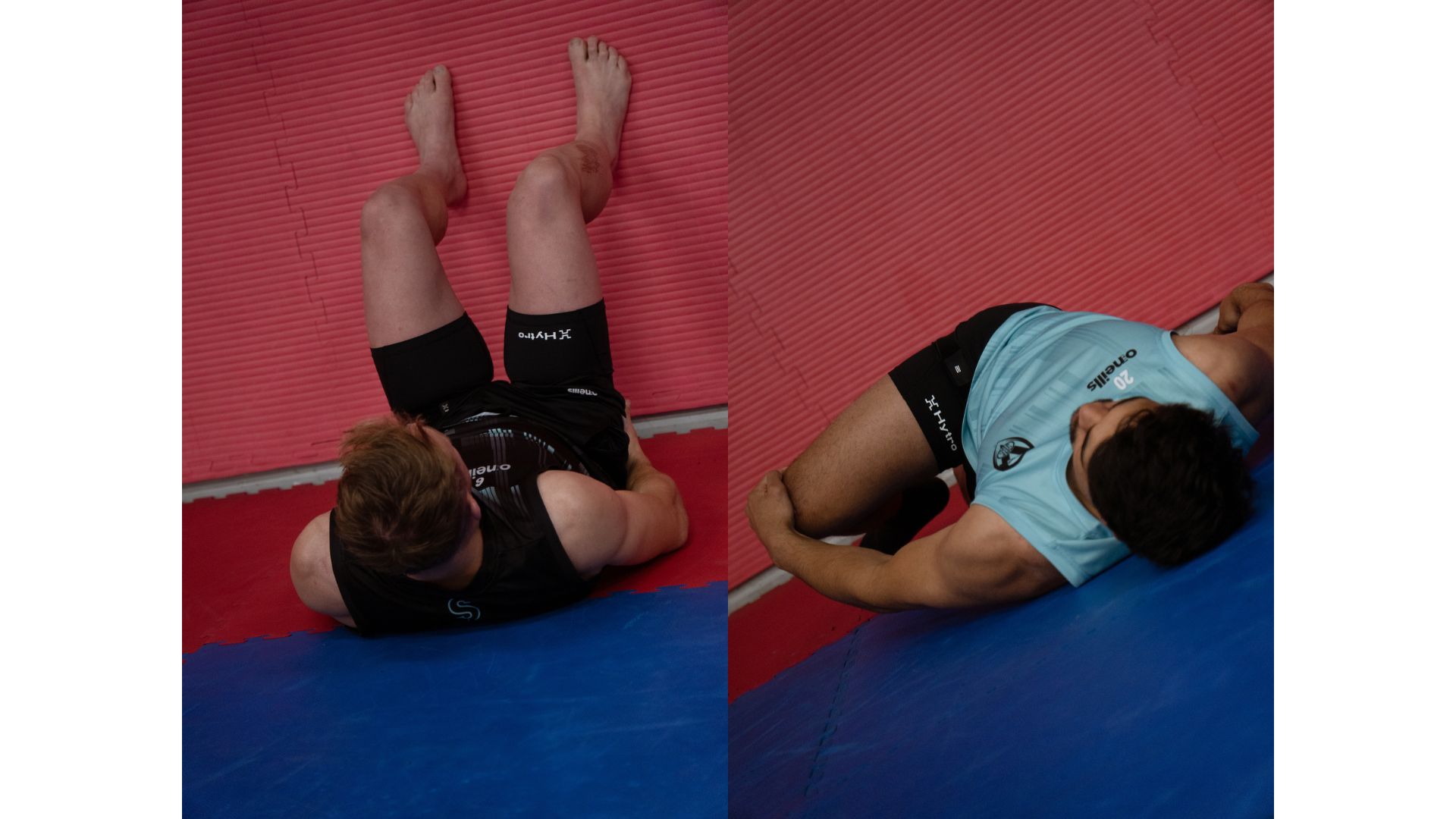
Blood Flow Restriction (BFR) is gaining a cult following among elite athletes. Pro boxer Chris Billam-Smith is a fan. Players at Super League rugby club St Helens swear by it. Numerous Super League, Premier League and Rugby Premiership teams use it.
BFR training involves using a flexible band or cuff to reduce blood flow to the arm or leg muscles while performing low-intensity exercise. The theory is that the cuff allows oxygenated blood to flow into the working muscles but restricts the return of deoxygenated blood, prompting a strong adaptive response—even when lifting light loads—and increasing muscle fiber activation.
This practice might sound like the latest flash-in-the-pan gym fad but, in fact, BFR training can be traced all the way back to Japan in the 1960s, when a doctor named Yoshiaki Sato developed the technique to rehabilitate a fractured leg.
So what does BFR training involve and how does it work? We spoke to St Helens’ head of strength and conditioning, Matt Daniels, to learn how partnering with Hytro BFR wearables has helped the Merseyside outfit secure four consecutive Super League titles, as well as the prestigious World Club Challenge trophy last season.
How do you use BFR with the players?
We predominantly use them for post-match recovery. The morning after a game, the whole squad will go through a recovery protocol wearing BFR shorts—half [the squad] will focus on active recovery, half on passive recovery, before swapping over.
What do these sessions look like?
The active recovery group tighten the straps on the BFR shorts and perform an eight-exercise circuit, varying upper and lower-body moves such as press-ups, goblet squats and landmine shoulder presses. They will do two rotations of 10 reps, then release the straps. After a minute they will tighten the straps again, and do three lots of two minutes each on a treadmill, exercise bike and rowing machine or air bike.
The passive recovery group, meanwhile, will do breathing exercises and low-level stretching, all blood flow restricted, before swapping with the active recovery group. We also use the shorts with ice baths.
Wow, so you’ve managed to make ice baths even more unpleasant…
The players welcome the distraction. They will spend one minute restricted in the ice bath, then one minute in a hot shower with the straps released to flush the system, repeated five times. We typically do this after heavy field sessions or the day after a game, but we don’t use ice baths after any lower-body lifts because you’re trying to cause a little bit of damage. You want that inflammation to occur as that’s how you build your strength.
What do the players think of BFR training?
Generally, it makes them feel better. Our players all reported improved wellbeing scores —which review fatigue levels, muscle soreness and sleep quality—after using the BFR shorts. That was all the evidence we needed. They really believe in it too. They’re pretty used to fads that come and go but this has always been a staple of their training. Our halfback Jonny Lomax, who is in his 30s now, really loves it. He never has [the cuffs] off!
How can BFR training help with injuries?
In terms of maintaining strength with injured players, we see minimal to no drop-off with those who use BFR training for the course of their rehabilitation. For example, a player might be bench pressing 100kg before injury, then have to reduce the load considerably during their rehab. If they do this using the BFR wearables, while increasing the sets and reps, once fit again they should be able to pick up exactly where they left off. For the coaches, the more players we have fit and available to train, the more productive a coaching session can be, and that’s played a massive part in being able to improve on-field as well as off-field.
How does BFR work?
BFR is a way of manipulating or manufacturing false load. By restricting blood flow you’re making the lift harder, which accentuates all the micro-tears that occur in the muscle. The problem with regular hypertrophy exercise is that the body is too efficient. By using BFR you’re sort of cheating the body into a state of shock, reducing its ability to flush away lactic acid and replenish the muscle with oxygenated blood. It’s simple, but beautifully effective.
That sounds intense. Is it painful?
It’s a weird feeling—it’s hard to explain. For recovery, it should never get to the point of pain, but if you’re lifting for a high number of reps it can trigger a strange feeling.
It makes sense for power athletes, but is BFR training for everybody?
I genuinely think it is. I’m more of a running man these days and, because of my back, I can’t tolerate heavy loads any more. Instead, I use the BFR shorts so I can lift a little bit lighter but get just as much out of the session. The Hytro kit is pretty discreet too so it’s something you can strap on and strap off between your lifts.
How do you see BFR training being used in the future?
Education is key. When we first started using BFR it was a bit of trial and error but the beauty is you can’t do any damage. You’re not stopping the blood flow completely, just slightly restricting it. We’ve found established protocols that work for our athletes in a contact sport but they could evolve and develop, as we’ve seen with their use of ice baths. Some of our players use them in their pre-match warm-up, [some] when they come off [the pitch] to stay warm. Ultimately, making sure people are up to speed on how to best use them, whether for strength, endurance or power, will be key.
How St Helens Use BFR For Recovery
Active Recovery
The morning after a match, half the team will perform this eight-move circuit with blood flow restricted. They will perform 10 reps of each exercise with light loads or just their body weight, and repeat the circuit to complete a total of two rounds.
- Push-up
- Banded pull-down
- Trap bar deadlift
- Landmine shoulder press
- Chest-supported row
- Banded front raise to pull-apart
- Incline press
- Goblet squat
Next, they will release the straps and rest for one minute, before tightening the straps again to perform this cardio circuit, with two minutes on each machine.

- Wattbike at a cadence above 80 RPM
- Treadmill set at a 1% incline at speed 5.5km/h (fast walk)
- Rowing machine, air bike or SkiErg
Passive Recovery
Meanwhile, the other half of the team will cycle through a series of breathing exercises and low-level stretches, all with blood flow restricted. Once complete, they will release the straps and swap places with the other group.

How St Helens Use BFR For Hypertrophy
The Saints tend to use BFR with hypertrophy workouts for younger athletes in pre-season. These sessions will mirror a typical hypertrophy workout, with high volume and slow eccentric phases of each lift. A typical upper-body session could include bench presses, weighted press-ups, landmine shoulder presses and chest-supported rows.
The players perform four sets of 12-15 reps of each exercise, with blood flow restricted for the working set and released for each rest period.







